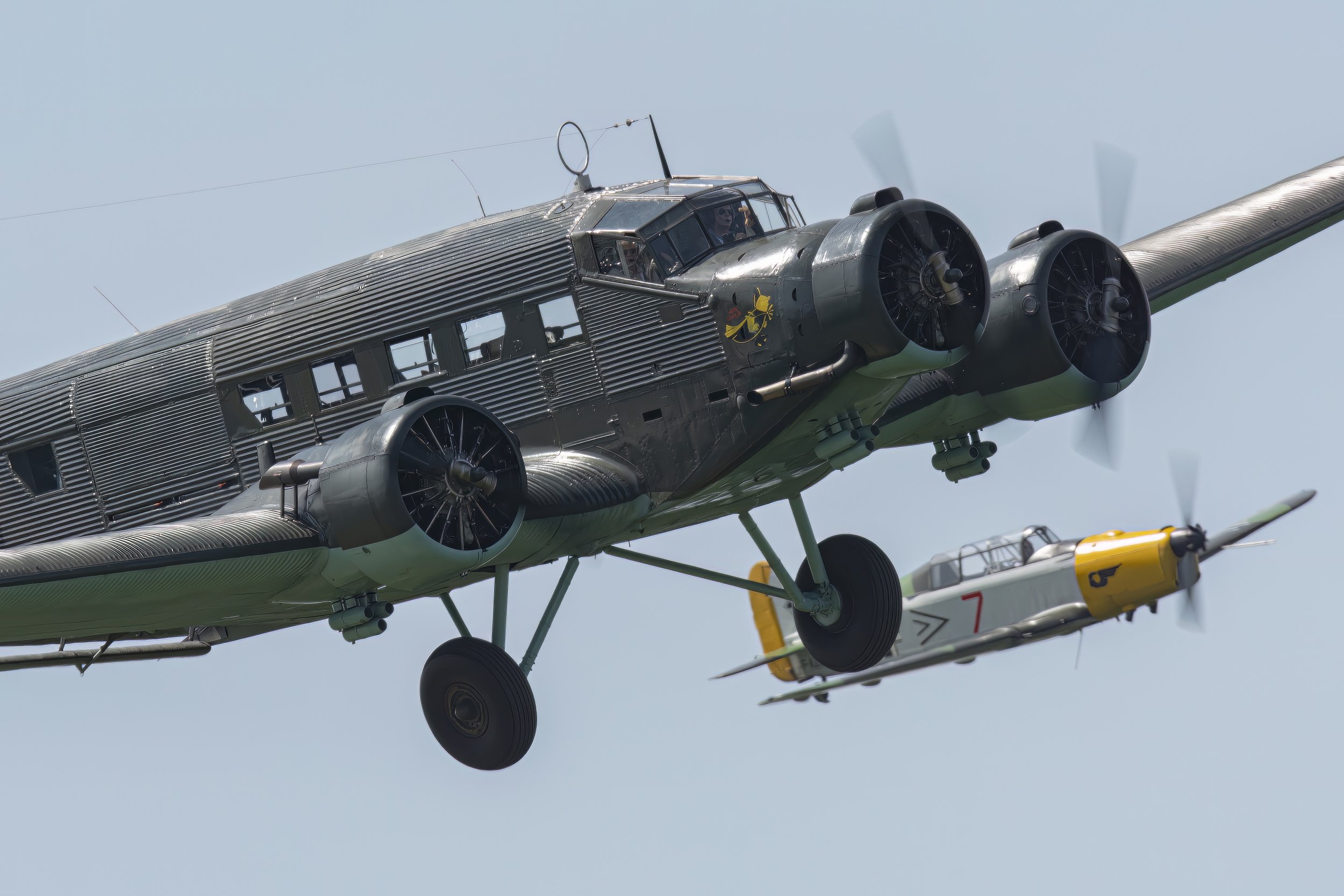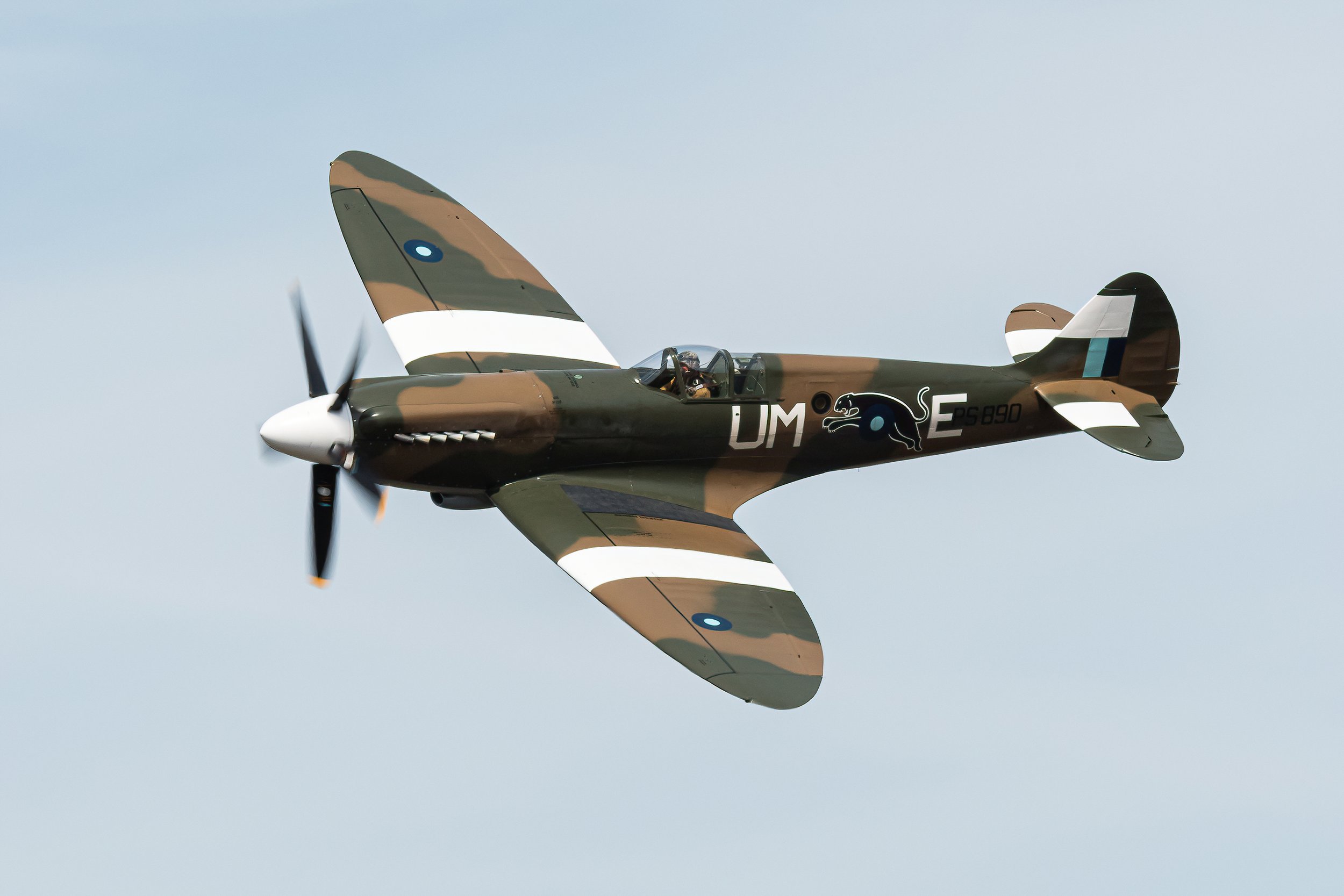Noratlas F-AZVM
Year built
1956
Aircraft
N-2501F Noratlas
Base
Marseille Provence Airport
This exact Noratlas was built as an N-2501F and first flew on the 24th of May 1956 when it left the Bourges assembly line. It entered operational service on June 18, 1956, at Escadron de Transport 1/61 Touraine, (Transport Squadron 1/61 Touraine), then based at the Orléans-Bricy Air Base. In November 1956 it participated in Operation 700, in the Anglo-French campaign of Suez with 40 other Noratlas from the Island of Cyprus (Larnaca airfield). It remained with this Squadron until March 28, 1958.
In March 1958 it was transferred to the Flight Test Center, where the Noratlas notably carried out numerous tests of Parachute drops and Air-Drop Equipment until January 1959. It was then transfered to Escadron d'Instruction des Troupes Aéroportés 341 (Airborne Troops Instruction Squadron) on the Pau-Pont Long Base. This squadron's mission was to train parachutists and also serves as a heavy Air-drop school.
On the 12th of December 1960, the Noratlas was assigned to Groupe de transport III/62 Sahara (Transport group III) of the 62nd Wing based in Algiers where it receives, as seen today, its famous green nose. The Sahara Group was the last transport unit to leave Algeria on the 1st of April 1964 and formed the squadron Escadron de Transport 2/63 “Bigorre” (Transport Squadron 2) in Pau by merging with the EITA 341 Airborne Troops Instruction Squadron mentioned above.
This exact Nortalas left Algeria on the 1st of January 1962, and received various assignments until February 24, 1964, the date of its transfer to the Centre d'Instruction des Equipages de Transport 340 (Transport Crew Training Center 340) in Toulouse-Francazal where it stayed up until July 27, 1966. All military air transport crews (pilots, navigators, radio operators, flight engineers) were trained at the CIET 340. In 1960 CIET formed a Guimauve (Marshmallow) display team, the only French aerobatic team to have used heavy transport planes (in this case the Noratlas), the team was active up until 1971.
From July 1966 to July 1967, the Nortalas 105 was assigned to the Escadron de Convoyage EC 70 (Convoy Squadron) in Chateaudun, then went to the Atelier industriel de l'aéronautique (Aeronautic industrial workshop) in Clermont Ferrand where it remained until March 1968.
From March to December 1968, it was assigned to the Escadron de Transport 1/61 Touraine, (Transport Squadron 1/61 Touraine) in Orléans-Bricy then Groupe De Transport 2/62 ANJOU (Transport Group 2) based in Reims (from December 1968 to November 1970).
After returning to the CIET in Toulouse (September 1971-December 1973), it flew again to the African continent, assigned to GAMOM 88 Groupe Aérien Mixte d'Outre-Mer (Overseas Mixed Air Group) in Djibouti, until September 1974. It has crisscrossed the Red Sea and the East African coasts from Somalia to Madagascar, participating in numerous humanitarian missions or medical evacuations.
It was then transferred to the Escadron de Transport 1/62 Vercors (Transport Squadron 1/62 Vercors) where it served from September 1974 to February 3, 1978, and in July 1978 it joined the Escadron de Transport 2/63 Bigorre (Transport Squadron 2/63 Bigorre) based at Évreux-Fauville Air Base where it remained until July 1984.
In July 1984 the Nortalas provided logistical support for the CIFAS 328 - centre d'instruction des Forces aériennes stratégiques (Strategic Air Force training center) between the Bordeaux-Mérignac Air Base and the other French Air Force bases where Mirage IV A units were located (Istres, Orange, Creil, St Dizier, Avord, Mt de Marsan, Cambrai, Cazaux)
On January 3rd, 1985, it once again joined VERCORS (1/63) at Toulouse-Francazal, to be placed on permanent detachment (DPT 09/063) in Salon-de-Provence Air Base, where it provided logistical support for the Patrouille de France, as well as performed the drops of the French Air Force parachuting team, the Phénix.
The Nortalas 105 ended its operational career on June 3, 1986, after exactly 30 years of service and 10,772 flight hours (the flight potential of the Nord 2501 was set at 10,000 hours).
On June 10th 1986 the Nortalas was ferried from Toulouse Airport to Aix-en-Provence Aerodrome where it was put into storage for 7 long years before it was bought by the Association Le Noratlas de Provence who restored it back to an airworthy condition. The Nortalas performed its first post-restoration flight on the 20th of April 1999 with a civil registration F-AZVM it has to this day.
| Back to Top |
Nord N-2501F Noratlas
The Nord Noratlas was a dedicated military transport aircraft, developed and manufactured by French aircraft manufacturer Nord Aviation.
Development commenced during the late 1940s with the aim of producing a suitable aircraft to replace the numerous older types that were in service with the Armée de l'Air (French Air Force) which dated back to the Second World War. In response to a competition organised by the Direction Technique Industrielle (DTI), Nord produced their Nord 2500 proposal, which was selected as the most promising. Experiences with the first prototype, powered by Gnome-Rhône 14R engines, did not impress, thus the design was revised as the Nord 2501, powered by the SNECMA-built Bristol Hercules 738/9 engines instead, which was found acceptable. Accordingly, the Noratlas was introduced to service by the Armée de l'Air on 6 December 1953.
Following its adoption by the Armée de l'Air, a number of other operators in both Europe and Africa chose to procure the Noratlas for their own military air services. Having found itself in a similar situation to France, the German Air Force of West Germany chose to adopt the same solution, procuring the type for their own purposes. The Israeli Air Force, the Hellenic Air Force, and the Portuguese Air Force all deployed the Noratlas under combat conditions. Furthermore, operators often found a wide variety of uses for the type, extensively adapting aircraft to suit secondary roles in some cases. The Noratlas was also adopted by a number of civil operators, although most aircraft were flown by military customers. As such, several hundred aircraft were produced during the Noratlas' production run, which lasted over a decade.
The Nord Noratlas was a purpose-built twin-engine, twin-boom transport aircraft. It featured a large pod-like fuselage that was slung in between the aircraft's twin booms and indirectly attached to them via its shoulder-mounted wing. The Noratlas was deliberately designed to be operated under austere conditions, featuring widely spaced landing gear, complete with wide low-pressure tyres, for additional stability and suitability to moving over rough terrain, while the propellers had sufficient clearance to accommodate such operations as well. It was powered by a pair of SNECMA-built Bristol Hercules 738/9 engines, each of which being capable of producing 2,040 hp and driving a four-bladed Rotol propeller.
The sizable cabin of the Noratlas was capable of accommodating up to 7.5 short tons of freight or a maximum of 40 passengers; when flown at a cruising speed of 200 mph, it could transport a 6-ton payload over a range of up to 750 miles. Cargo was typically loaded into and unloaded from the main cabin via the rear-facing clamshell doors, which were intentionally positioned close to ground level to ease freight handling.
| Back to Top |










| Back to Top |















